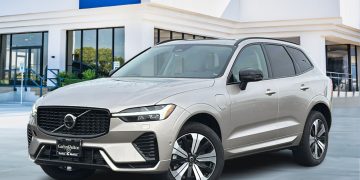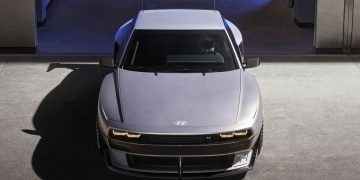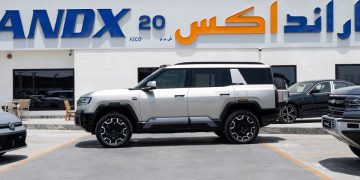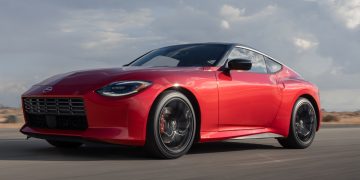1. The Rise of Electric Vehicles (EVs)
The shift from traditional internal combustion engine (ICE) vehicles to electric vehicles (EVs) is one of the most significant trends in the automotive industry today. EVs offer a range of benefits, including reduced emissions, lower operating costs, and a quieter driving experience. As governments around the world implement stricter emissions regulations and consumers demand cleaner alternatives to fossil fuel-powered vehicles, automakers are racing to develop more efficient, sustainable, and affordable electric cars.
Several key factors are driving the growth of the electric vehicle market:
- Environmental Concerns: The growing awareness of climate change and the need to reduce carbon emissions is one of the main drivers behind the rise of EVs. Electric vehicles produce zero tailpipe emissions, making them a more environmentally friendly alternative to traditional gasoline and diesel-powered vehicles.
- Government Incentives: Governments around the world are offering various incentives to encourage the adoption of electric vehicles. These incentives include tax credits, rebates, and grants for consumers and manufacturers, as well as investments in charging infrastructure to make EVs more accessible and convenient.
- Advancements in Battery Technology: One of the main challenges for electric vehicles has been the limited range and long charging times associated with their batteries. However, advancements in battery technology, such as the development of solid-state batteries and improvements in lithium-ion technology, are making EVs more practical for everyday use. Longer battery life and faster charging times are helping to overcome these obstacles, making electric vehicles more appealing to consumers.
- Sustainability: As manufacturers and consumers become more environmentally conscious, there is increasing demand for sustainable materials and processes in vehicle production. Automakers are incorporating recycled and eco-friendly materials, such as biodegradable plastics and renewable resources, into their designs. Additionally, electric vehicles offer the opportunity to reduce the environmental impact of transportation by eliminating the need for fossil fuels.
Leading Brands in Electric Vehicle Innovation:
- Tesla: Tesla is widely regarded as the leader in the electric vehicle market. The brand has revolutionized the automotive industry with its electric cars, offering long-range capabilities, high-performance features, and cutting-edge technology. Tesla’s vehicles, such as the Model S, Model 3, and Model X, have set the standard for electric vehicles in terms of range, performance, and design. The company continues to innovate with plans for a more affordable electric car, the Cybertruck, and its goal of achieving full self-driving capabilities through software updates.
- Rivian: Rivian, an American electric vehicle startup, is gaining attention for its electric trucks and SUVs, including the R1T pickup and R1S SUV. Rivian’s vehicles are designed to be both rugged and environmentally friendly, making them an attractive option for adventure-seeking consumers. The company is also committed to sustainability, with plans to create a carbon-neutral manufacturing process and use sustainable materials in its vehicles.
- Lucid Motors: Lucid Motors is another new entrant into the electric vehicle market, but it is already making waves with its luxury EVs. The Lucid Air sedan offers impressive performance, long-range capabilities, and advanced technology features, positioning the company as a competitor to Tesla in the luxury EV segment. Lucid Motors is focused on sustainability and efficiency, using a carbon-neutral manufacturing process and working to reduce the environmental impact of its supply chain.
- Volkswagen Group: Volkswagen, one of the largest automakers in the world, is making significant strides in the electric vehicle market with its ID series. The ID.3, ID.4, and ID. Buzz (an electric version of the iconic Volkswagen Microbus) are just the beginning of the company’s electrification strategy. Volkswagen plans to invest billions of dollars in electric mobility and aims to become a leader in the global EV market. The brand is also committed to sustainability, using green energy in its manufacturing processes and ensuring that its vehicles are produced with environmentally friendly materials.
2. Autonomous Driving: The Future of Mobility
Autonomous driving technology, often referred to as self-driving or driverless cars, is another major trend in the automotive industry. The development of fully autonomous vehicles has the potential to revolutionize the way we travel, making transportation safer, more efficient, and more accessible. Autonomous driving technologies rely on advanced sensors, cameras, radar, and machine learning algorithms to enable vehicles to navigate and make decisions without human intervention.
Key benefits of autonomous driving include:
- Improved Safety: Human error is responsible for the majority of traffic accidents, and autonomous vehicles have the potential to significantly reduce the number of accidents caused by factors such as distracted driving, impaired driving, or fatigue. Self-driving cars use sensors and cameras to detect obstacles, pedestrians, and other vehicles, allowing them to react faster and more accurately than human drivers.
- Increased Efficiency: Autonomous vehicles can optimize traffic flow, reduce congestion, and improve fuel efficiency. With self-driving cars, vehicles can communicate with each other and with traffic infrastructure, allowing for more efficient route planning and coordination. This could lead to less time spent in traffic and lower emissions.
- Accessibility: Autonomous vehicles have the potential to improve mobility for individuals who are unable to drive due to age, disability, or other reasons. Self-driving cars could make transportation more accessible for a wide range of people, enabling greater independence and freedom.
Leading Brands in Autonomous Driving Innovation:
- Waymo (Google): Waymo, a subsidiary of Alphabet (Google’s parent company), is a pioneer in the development of autonomous driving technology. Waymo has been testing self-driving cars for several years and is considered one of the leaders in the field. The company’s autonomous vehicles use a combination of sensors, cameras, and advanced algorithms to navigate roads safely and efficiently. Waymo has already begun offering autonomous taxi services in select cities, and it continues to work on improving its technology for wider adoption.
- Tesla: Tesla is also at the forefront of autonomous driving technology, with its Autopilot system offering semi-autonomous driving capabilities. While Tesla’s vehicles are not yet fully autonomous, the company’s advanced driver-assistance systems (ADAS) allow for features like lane centering, adaptive cruise control, and automated parking. Tesla continues to push the boundaries of autonomous driving, with the goal of achieving fully autonomous capabilities through software updates and ongoing testing.
- Cruise (GM): Cruise, a subsidiary of General Motors, is working on developing autonomous vehicles for commercial use. The company has been testing its self-driving cars in urban environments and aims to create an autonomous ride-hailing service. Cruise is focused on developing safe, reliable, and scalable autonomous driving technology and has received significant investment from companies like Honda and Microsoft.
- Apple: While not traditionally an automotive brand, Apple has been working on autonomous driving technology for several years through its “Project Titan.” Although details about the project are scarce, Apple is rumored to be developing a self-driving car that could potentially integrate with its existing ecosystem of products. Apple’s focus on user experience and seamless integration with its software could give it a unique advantage in the autonomous vehicle space.
3. Sustainable and Eco-Friendly Design: A Focus on Materials and Efficiency
As concerns about climate change and environmental degradation grow, car manufacturers are increasingly prioritizing sustainability in their design processes. The use of eco-friendly materials, energy-efficient manufacturing processes, and designs that minimize waste and environmental impact are becoming more common in the automotive industry.
Key trends in sustainable automotive design include:
- Recycled and Renewable Materials: Automakers are exploring the use of recycled and renewable materials in vehicle production. This includes everything from recycled plastics to bio-based materials, such as hemp, bamboo, and natural fibers. These materials help reduce the environmental impact of vehicle manufacturing while still providing the durability and performance required for modern cars.
- Lightweight Materials: Reducing the weight of vehicles is a key strategy for improving fuel efficiency and reducing emissions. Lightweight materials, such as aluminum, carbon fiber, and advanced composites, are being used to make vehicles lighter and more efficient without compromising strength or safety.
- Energy-Efficient Manufacturing: Car manufacturers are also focusing on making their production processes more energy-efficient and environmentally friendly. This includes using renewable energy sources in manufacturing plants, reducing waste, and optimizing production processes to minimize the environmental footprint.
Leading Brands in Sustainable Automotive Design:
- BMW: BMW is committed to sustainability and has made significant strides in incorporating eco-friendly materials and processes into its vehicles. The company’s i3 electric car is made from sustainable materials, including carbon fiber and recycled plastics. BMW is also focusing on reducing emissions in its manufacturing processes and plans to have a fully electric lineup by 2030.
- Volvo: Volvo has set ambitious goals for sustainability and plans to become a fully electric car manufacturer by 2030. The brand is incorporating sustainable materials like recycled plastics, natural fibers, and responsibly sourced leather into its vehicles. Volvo is also committed to achieving carbon neutrality by 2040.
- Ford: Ford is focused on developing electric and hybrid vehicles that offer performance and sustainability. The company is investing in electric vehicles like the Mustang Mach-E and the upcoming electric F-150 Lightning truck. Ford is also working on sustainable manufacturing practices, including using recycled materials in its vehicles and reducing the environmental impact of its production facilities.

4. Connected and Smart Vehicles: The Role of Technology in Future Car Design
The integration of advanced technologies, such as connectivity, infotainment, and smart features, is another key trend in future automotive design. Modern vehicles are increasingly becoming “smart” devices that offer a range of connected features to enhance the driving experience. From advanced navigation systems and voice recognition to real-time traffic updates and personalized entertainment, smart technology is playing an integral role in shaping the future of cars.
Key trends in connected and smart vehicles include:
- Infotainment Systems: Infotainment systems are becoming increasingly sophisticated, offering features like touchscreens, voice controls, and integration with smartphones and apps. These systems provide drivers with access to music, navigation, social media, and more, making the driving experience more enjoyable and convenient.
- Vehicle-to-Everything (V2X) Communication: V2X communication allows vehicles to connect with each other, as well as with infrastructure such as traffic lights and road signs. This technology can improve traffic flow, reduce congestion, and enhance safety by providing real-time information about road conditions, accidents, and other potential hazards.
- Over-the-Air (OTA) Updates: Over-the-air software updates allow car manufacturers to improve and update vehicle systems remotely. This means that drivers can receive the latest features and improvements without needing to visit a dealership. OTA updates can include everything from software bug fixes to new features, making vehicles smarter and more adaptable.
Leading Brands in Connected Vehicle Technology:
- Tesla: Tesla is a pioneer in connected vehicle technology, offering advanced infotainment systems, over-the-air updates, and integration with smartphones and other devices. Tesla’s vehicles are equipped with advanced sensors and cameras that provide real-time data for features like autopilot, energy efficiency monitoring, and performance tracking.
- Audi: Audi is known for its advanced technology and infotainment systems, which are designed to provide a seamless driving experience. The brand’s MMI (Multi Media Interface) system offers intuitive controls, voice recognition, and smartphone integration. Audi is also working on V2X communication and other connected vehicle technologies to improve safety and efficiency.
- Mercedes-Benz: Mercedes-Benz is investing heavily in connected car technology, offering features like the MBUX infotainment system, which includes voice recognition and AI-driven personalization. The brand is also developing autonomous driving technologies and working on integrating V2X communication to improve the overall driving experience.
Conclusion
The future of automotive design is being shaped by a combination of innovation, sustainability, and technology. As electric vehicles, autonomous driving systems, and smart connectivity redefine the way we think about cars, automakers are adapting their designs to meet the demands of a rapidly changing world. Brands like Tesla, BMW, and Volkswagen are at the forefront of this transformation, embracing new technologies and sustainable practices that will not only enhance the driving experience but also contribute to a greener, more sustainable future for transportation. As we look ahead, the future of the automotive industry promises to be exciting, with new breakthroughs and innovations continuing to push the boundaries of what is possible in car design.


































Discussion about this post